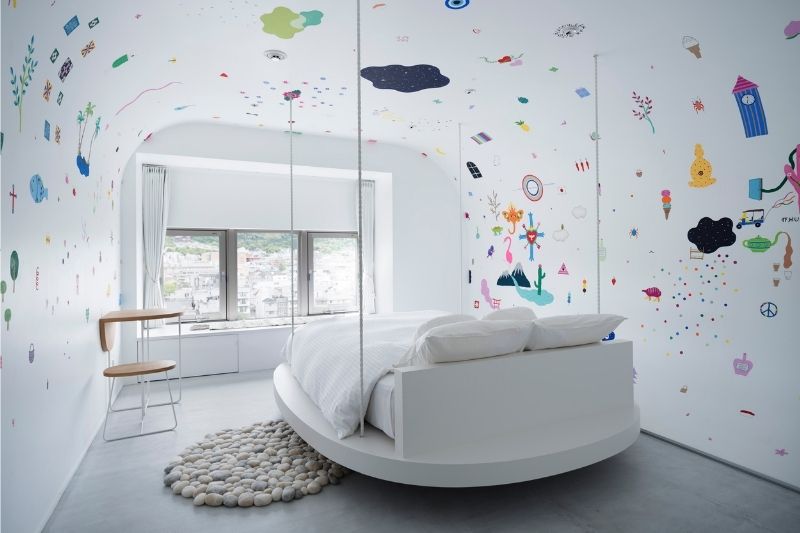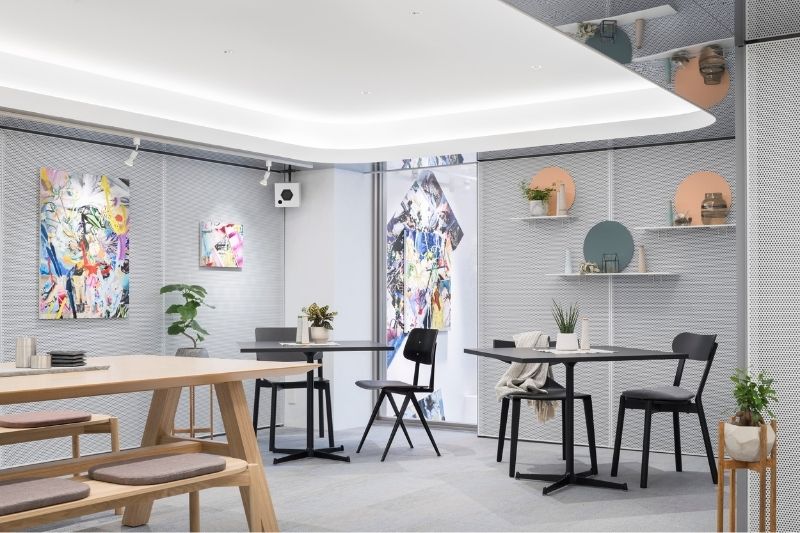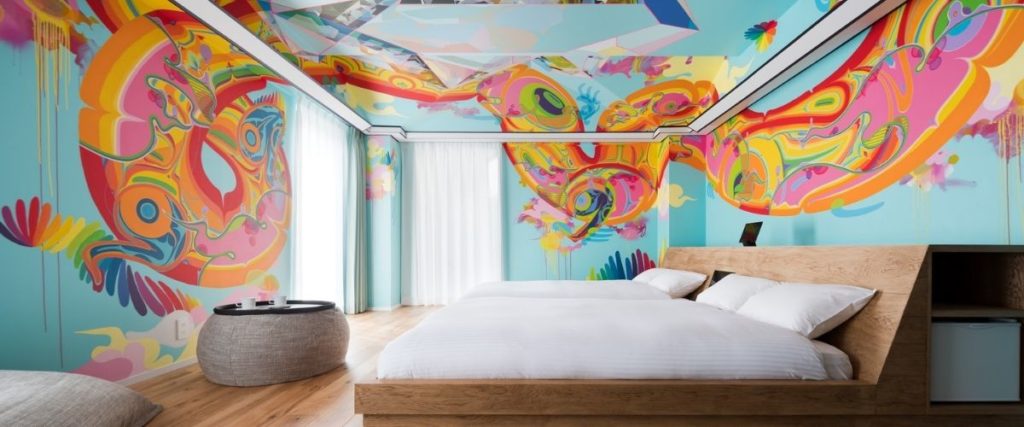Offering a fully immersive art hotel experience, BnA Hotels co-founder Keigo Fukugaki talks about creating unique experiences in a space that’s more than just a hotel.
Airbnb has disrupted the hospitality industry, democratising travelling for many. However, the global sharing economy platform is not devoid of controversies. Airbnb has been accused of driving gentrification, with many middle-income neighbourhoods across the world witnessing increased rental prices and housing exploitation as a result. Tokyo-based entrepreneur Keigo Fukugaki and his partners wanted to devise an antithesis to the Airbnb template – hotels that empowered local neighbourhoods while providing travellers with a truly culturalised experience during their stay.
An architect and interior designer with over 14 years of experience under his belt, Keigo Fukugaki has accumulated a rather impressive spectrum of projects in his portfolio over the years, including landmark bridges in the Bay area and designing corporate spaces for Facebook and Google. Here, we sit down with Keigo to talk about BnA Hotels and understand why art is a mission for them, not an afterthought.

The Inception of BnA Hotels
“Airbnbs were becoming such a big thing, where everything was starting to look the same. Everyone was creating an Airbnb as a business rather than what it used to be, a real homestay experience where you got to talk to the host and get a small introduction to the city – the small things. Instead of what has become synonymous with Airbnb nowadays, a stock standard room with IKEA furniture,” he recounts.
Wanting to break the chain of standardised hotel experiences, Keigo and his partners aimed to create art collective hotels across Japan, highlighting the art and artists that often go unnoticed in the hustle and bustle of the country. “None of us come from a hotel background, so we didn’t want to build a hotel to build a business. We wanted to build a hotel as a vehicle to inspire people, ourselves, and the community that we work with.”
Showcasing Artistic Talent: The Driving Force
The BnA hotels are touted to deliver a live-in-art experience for visitors, with each room centred around the artist’s distinctive vision. When asked why art is such an integral part to BnA Hotels, Keigo replies, “As my career began to take off, I started working with different artists to have their artwork in commercial spaces and after a while, I started realising that art shouldn’t be something that comes in after the design process.”
Having decided he wanted to change his approach to designing, Keigo and his team used the BnA Hotels as a platform for up and coming artists to present their passion projects – with the art coming first this time. “I realised that some of these artists are extremely talented but didn’t have the right opportunities to grow or express themselves. They were confined to certain eyes because they didn’t have the right clients,” he explains. “I had, I guess, some sort of opportunity that they didn’t have – where I could actually present a much bigger project for them, where we can work together to make those things happen.”

Prioritising Community: Integrating Local Character
Keigo and his team have been big proponents of integrating local communities into their hotel ecosystem from the get-go. “Each location has a concept and we really do try to make these facilities something that the locals can see as part of their city,” he states.
The BnA Hotels span across key cities in Japan, namely Tokyo, Akihabara, and Kyoto – each hotel attempting to capture the essence of what said region stands for. If you were to chance upon their website, you would realise that the brand name “BnA” is the only common factor among all three spaces. The location in Akihabara is identified as a studio, while the premises in Kyoto takes up after a museum.
Elaborating on this decision, Keigo explains, “The one in Akihabara is called a studio because we really wanted to make that a place where artists could exhibit their lifestyle as part of their artwork. Akihabara is an area where a lot of creative output happens so that was something we wanted to integrate into the DNA of that location. With Kyoto, it has a very contemporary feel to it. We called it a museum because there are no contemporary museums in the area and we wanted to punch that underlying vibrancy up a little bit.”
Meeting Eastern and Western Service Expectations
BnA Hotels boast of a relaxed atmosphere, where guests can mingle amongst themselves and with the artists in the bar or gallery rooms. While the hotels enjoy the patronage of both foreign and domestic travellers, Keigo faces his own share of difficulties in straddling the expectations of both demographics. “We didn’t want to be servicing people, we wanted to keep it casual and friendly but we definitely created a higher hurdle for the local market – the Japanese have much higher expectations in terms of service.”
He hopes to manage expectations by giving those who visit their websites an accurate representation of what the hotel experience will be like. “We want to prepare our Japanese customers to get used to the fact that this is more of an international place where the services will be kind of geared towards an international market.” It’s a work-in-progress as Keigo and the team continue to learn, adapt, and achieve the optimal balance. “We’ve definitely had to adjust our services over time so both markets can kind of come together to enjoy their stay comfortably,” he shares.

Adapting to the Challenges of COVID-19
While Japan’s decision to impose a travel ban was effective in limiting the impact of the pandemic, it plagued the country’s tourism and hospitality industry. “COVID-19 has made us realise that our mission is greater than the means that we’re trying to accomplish it by,” he expresses.
Keigo reveals how, in fact, the pandemic came as a blessing in disguise. “Up until now, some of the art community saw us as opportunists, taking advantage of the art scene. We were operating as a hybrid – a hotel in an art facility – and that was looked upon with a little hesitation from the art community.”
For BnA, the pandemic meant a dearth of hotel-stayers, but Keigo and his team took this as an opportunity to capture the art-focused audience. Hotel-wide plays were launched for the entertainment of casual visitors and art exhibits were continually being held. “So the idea is that you can experience a play on every floor of the hotel, sort of like a Sleep No More, where the entire hotel becomes a theatre.” he divulges. “We’re running the hotels as an art facility rather than just a hotel now. The response has been great so far, I think the art community has also realised that our mission is honest.”
With ongoing talks about foreign expansions and new hotels in the pipeline, Keigo remains optimistic about the future of BnA Hotels. “As we move towards post COVID, we’re hopeful that the mix between the local art scene and the general population visiting us will become even more seamless, and that we find the groove of marrying the both better.”
Related Articles
reZme: The Software Startup Empowering Hotels During COVID-19
The Singaporean Startup Creating IoT Solutions to Transform the Energy Industry
Fancy a Luxury Stay in a Shipping Container? This Singaporean Entrepreneur Has Made It Happen.





